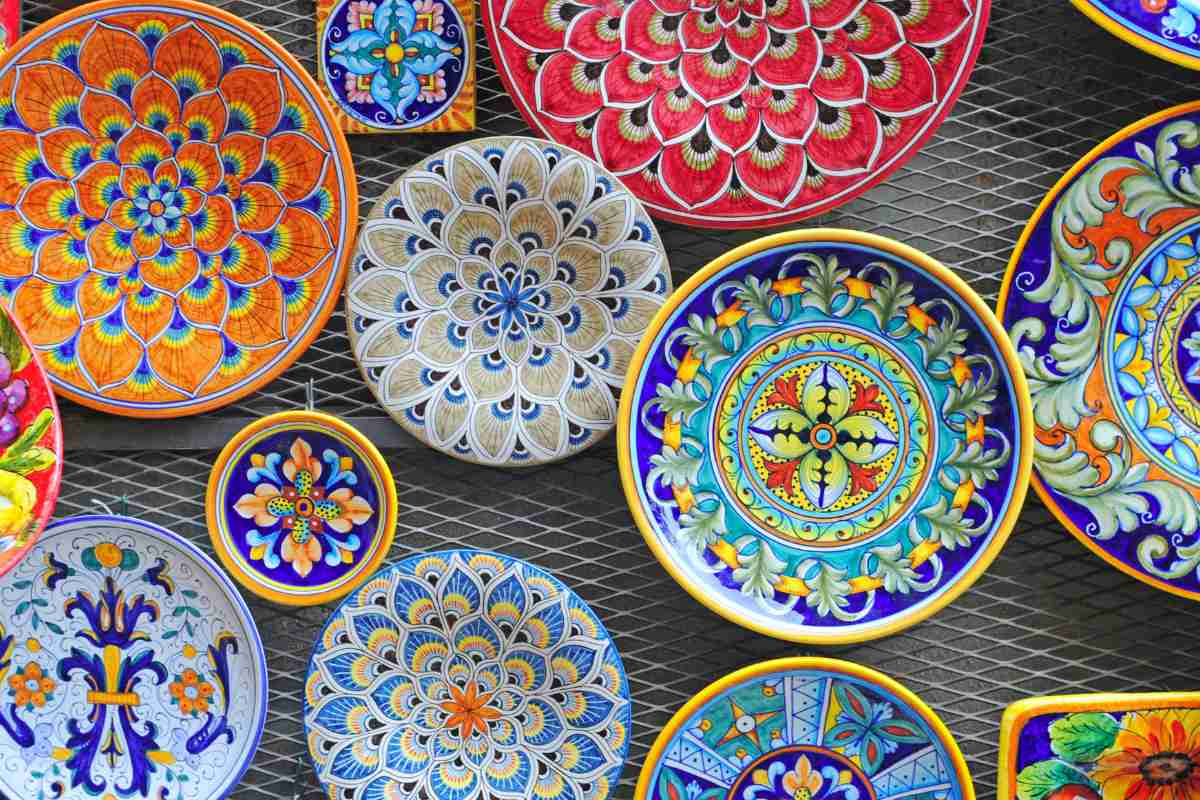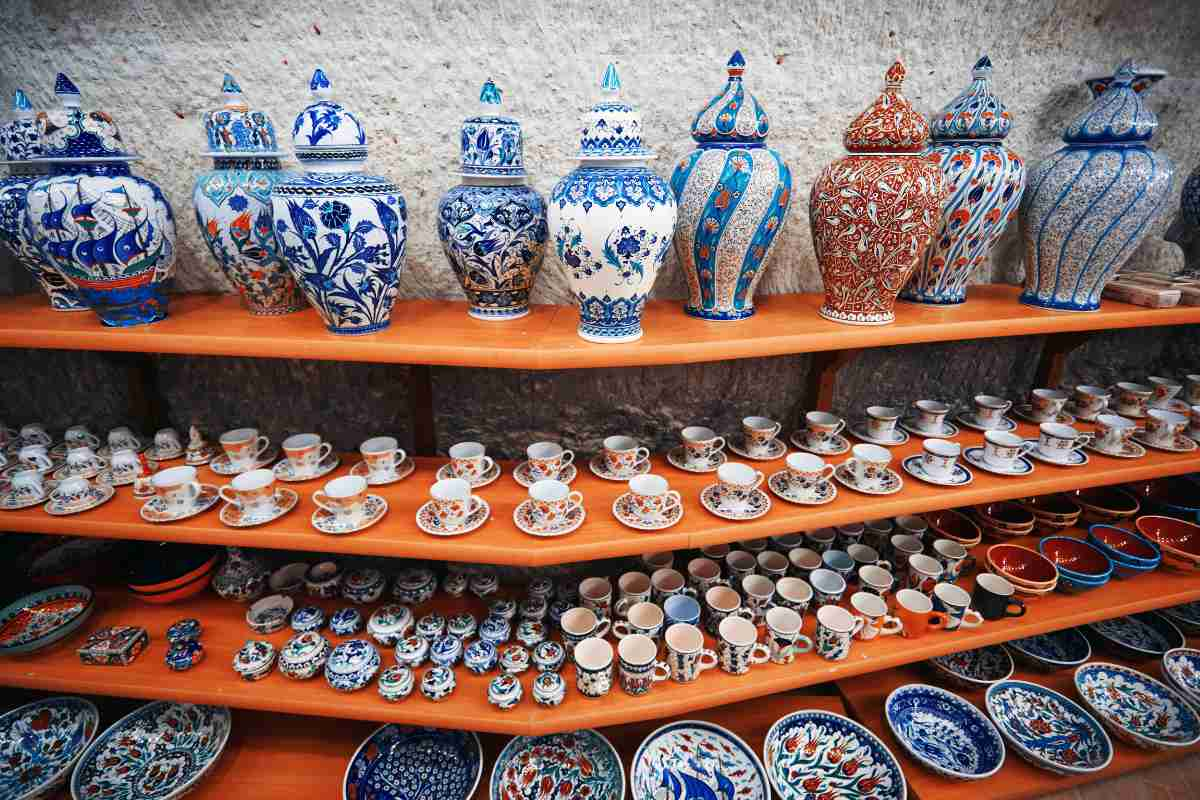The Timeless Allure of Ceramics: A Guide to Ceramic Art, Materials, and Uses
Ceramics possess timeless appeal, enhancing spaces with their colors, textures, and forms, while enriching lives both functionally and aesthetically.

Ceramics hold an enduring appeal both functionally and aesthetically. Their colors, textures, and forms elevate spaces and enrich lives across countless aspects of human existence.
Unveiling the Artistry of Ceramic Processes
Ceramic production involves a fascinating sequence of steps to transform raw minerals into finished ware:
Clay Preparation: Raw clay is refined through filtering, blending, and aging to achieve ideal plasticity, consistency, and purity for the type of ceramic being produced.
Forming: Ceramic artists employ various techniques to shape clay, including:
- Handbuilding: Forming pottery, sculpture, tiles, and more using only the hands and simple tools like ribs, loops, paddles, and stamps.
- Throwing: Using a potter's wheel to throw vessels, bowls, cups, and other round objects with a hands-on centrifugal approach.
- Casting: Pouring liquid clay slip into plaster molds to accurately mass produce complex forms after clay prototype modeling.
Drying: Wet clay must dry gradually to avoid cracking before the first firing. Drying can take days or be accelerated in controlled kilns.
Bisque Firing: The initial low temperature firing around 1000°C -1200°C to permanently harden the clay into an unfinished ceramic state ready for glazing and further decoration.
Glazing: At this stage, glazes are applied by dipping, pouring, spraying, brushing, coating, and decorating the bisqueware surface.
Glaze Firing: Firing the glazed ware to around 1200°C infuses the glaze into the body for an impervious glass-like final product. Glaze chemistry and kiln temperatures create diverse colors and effects.
Decoration: Added decorative techniques like hand-painting, transfers, gilding, carving, slip trailing, feathering, and burnishing take place before and after firing.
The sequential transformation from raw minerals to finished ceramics represents a true feat of human artistry and ingenuity!
Ceramics in Architecture and Interior Design
Ceramics from Lithostone in South Australia lend beauty, durability, and practicality to architectural and interior design contexts:
- Tiles: Glazed and unglazed ceramic wall and floor tiles provide stain, fire, and water-resistant surfaces in bathrooms, kitchens, foyers, pools, and facades.
- Mosaics: Elaborate imagery and patterns are created by assembling small cut and polished stone, glass, or ceramic tiles called tesserae into intricate mosaic artworks for walls, floors, and furnishings.
- Architectural Ceramics: Glazed bricks, terra cotta, and ceramic roof tiles amplify visual interest in building exteriors while providing structural integrity, insulation, and weather resistance.
- Sanitaryware: The innately waterproof, stain-resistant, and hygienic nature of ceramics makes them ideal for baths, toilets, sinks, and tile. Durability withstands heavy everyday use.
- Fireplaces and Stoves: Heat and thermal shock-resistant firebricks, hearths, and ceramic stove surfaces enable safe channeling of fire's warmth.
Ceramics bring both aesthetic enhancement and practical performance to designed spaces.
Ceramics in Art and Craft
Ceramics constitute a preeminent medium for artistic expression and studio craft across cultures:
- Sculpture: The renowned Venus of Willendorf statuette confirms ceramics' ancient roots in sculptural arts. Today, ceramic artists craft detailed figural, abstract, and conceptual sculptures employing modeling, carving, and molding techniques.
- Pottery: Clay's unique plasticity empowers potters to throw or handbuild a tremendous diversity of bowls, vases, plates, teapots, and decorative objects that fill our lives with beauty, meaning, and utility.
- Ceramic Jewelry: Delicate porcelain cameos, necklaces with ceramic beads and pendants, ceramic cufflinks, and ceramic-inlaid rings and bracelets exemplify jewelry artisans' ingenuity with ceramics.
- Ceramic Wall Art: From brilliant Persian tiles to modernist reliefs, ceramic artworks, and murals enliven interior and exterior walls with color, texture, symbolism, utility, or sheer creativity.
- Ceramics in Mixed Media: Contemporary ceramic sculpture often incorporates glass, metal, wood, and LED lighting in inventive combinations that break boundaries.

Ceramics accommodate every creative impulse from functionality to avant-garde abstraction.
Ceramics in Industry and Technology
The unique properties of advanced ceramics make them pivotal across sectors like manufacturing, energy, electronics, medicine, and aerospace:
- Refractories: Heat-resistant bricks lining furnaces, reactors, fireplaces, and ovens enable manipulating high temperatures up to 1900°C in metallurgy, glassmaking, and power generation.
- Electronics: Ceramics like alumina, barium titanate, and silicon carbide assume critical roles in microelectronics as insulating substrates, capacitors, resistors, and circuit protection devices.
- Aerospace: Ultra-high temperature capable ceramics handle the intense heat and stress of components like rocket engine nozzles, missile nose cones, and aircraft turbine blades.
- Biomedical: Bioceramics excel in artificial joints and implants thanks to their biocompatibility, durability in bodily environments, osteoconductivity, and aesthetic customizability.
- Filtration: Ceramics remove contaminants from air, water, chemicals, and food products due to targeted porosity, chemical stability, and sterilizability.
- Sensors: Ceramic elements reliably detect and transmit physical signals like temperature, pressure, flow rate, acceleration, and concentration into electronic data.
- Catalyst Supports: Ceramic pellets coated with precious metals serve as catalyst beds facilitating efficient chemical conversions in automotive, petrochemical, and polymer production applications.
- Semiconductors: Silicon carbide is found to be used as a semiconductor material due to its electronic bandgap properties, stability at high temperatures, and heat conductivity.
Caring for Your Ceramic Treasures
To preserve the beauty and value of ceramic art, tableware, and surfaces:
- Cleaning: Avoid abrasive scouring powders or pads that damage glazed surfaces. Instead use soft cloths, mild detergent, and gentle scrubbing to clean ceramics.
- Handling: Always lift vessels by their bases rather than handles to prevent damaging attachments. Avoid exposing ceramics to extreme temperature fluctuations.
- Storage: Shelve ceramics securely to prevent them from being knocked over and chipped. Acidic foods can erode glazes over time so wash promptly after use.
- Repairs: Only experienced professionals should repair valued ceramic wares. Improper adhesive selection or clumsy mending often causes further damage.
- Appraisals: Seek professional appraisals to establish monetary values for rare, antique, or art ceramics in your collection for insurance purposes.
With proper care, fine ceramics become lasting intergenerational treasures.
Exploring the Future of Ceramics
While founded in millennia of tradition, ceramics constantly evolve through innovation. Exciting frontiers include:
- Nanoceramics: Microscale ceramic particles enhance the properties of coatings, cosmetics, sunscreens, 3D printing pastes, and electronic materials through nanotechnology.
- 3D Printed Ceramics: Additive manufacturing now allows rapid prototyping and small batch production of intricately detailed ceramic artworks and components with CAD models.
- Bioceramics: Next-generation implantable bioceramics aim to actively stimulate bone regrowth while dissolving over time, eliminating the need for replacement surgeries.
- Sustainable Ceramics: Manufacturers increasingly minimize waste, utilize solar kilns, recycle wastewater, and employ renewable materials in an industry traditionally resource-intensive.
- Digital Ceramics: Artists employ digital programs to model forms, optimize production methods, and even digitally glaze and decorate pieces with advanced software and robotics.
- Smart Ceramics: Emerging electroceramics react to environmental stimuli like light, temperature, pressure, or voltage with properties that can be tuned for given applications.
Ceramics continue reinventing themselves, promising centuries more innovation ahead.
Conclusion
From the Venus de Milo sculpture to the ceramic metamaterials enabling next-gen cell phones, ceramics empower human creativity, industry, and progress. Their storied history and mastery over earth’s raw minerals endlessly inspire. Emerging technologies also propel ceramics into a bright future of further possibilities. Whether handcrafted or high-tech, ceramics merge science and aesthetics into one of civilization’s most enduring and influential material families.




Comments ()